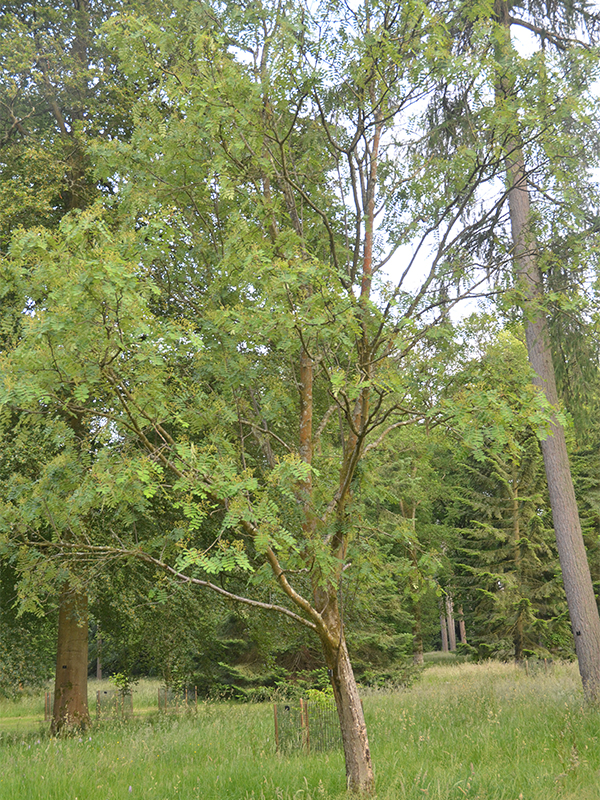
Woody > Sorbus > Sorbus glabriuscula > Sorbus glabriuscula
Sorbus glabriuscula
Origin: Native to China.
| Family |
| Rosaceae |
| Genus |
| Sorbus |
| Species |
| glabriuscula |
| Category |
| Woody |
| Type |
| Tree (deciduous) |
| USDA Hardiness Zone |
| 6b - 7a |
| Canadian Hardiness Zone |
| 7 |
| RHS Hardiness Zone |
| H6 |
| Temperature (°C) |
| -20 - (-15) |
| Temperature (°F) |
| -4 - 5 |
| Height |
| 4 - 8 m |
| Spread |
| 4 - 8 m |
Photographs
Description and Growing Information
Flowering Period
| Landscape |
| Low maintenance cottage and informal gardens. |
| Cultivation |
| Prefers full sun to partial-shade in moist but well-drained slightly acidic or neutral soil. |
| Shape |
| Upright and bushy. |
| Pests |
| Aphids, blister mites, sawflies and scale insects may be a problem. Canker, fireblight and silver leaf may occur. |
| Leaf Description |
| Large leaves with 11 - 17 leaflets. |
| Flower Description |
| Clusters of flowers that appear in late spring. |
| Fruit Description |
| Bunches of berries that appear in late summer and into winter. |
| Colour Description |
| The leaves are a bluish-green and turn red in autumn. The flowers are white. The fruit are white and sometimes appear pink. |
| Notable Specimens |
| Westonbirt, The National Arboretum, Tetbury, Gloucestershire, England. |
| Propagation |
| Seed sown in containers in a cold frame in autumn, taking semi-ripe cuttings in early summer, budding in summer or grafting in winter. |


